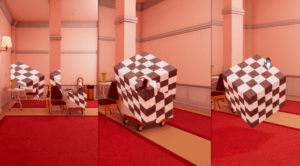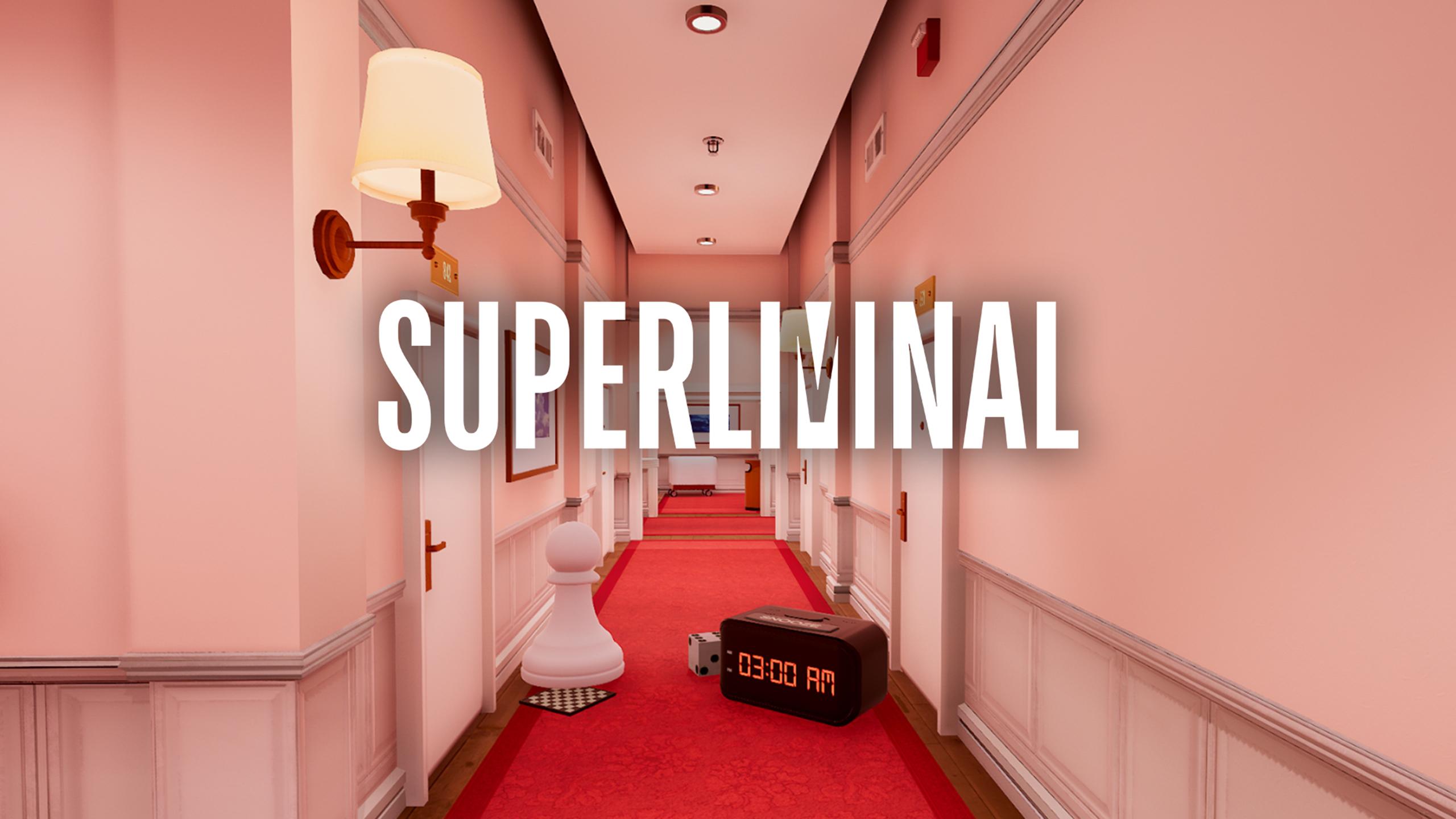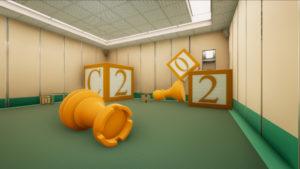Game, Creator, and Platform:
Superliminal is a walking simulator/puzzle game created by Albert Shih and Logan Fieth and published by Pillow Castle. The game was released in 2019 on Windows, macOS, Linux, Xbox One, Playstation 4, and Nintendo Switch.
Target Audience:
The game is perfect for people who like mind-boggling puzzles that force them to think in creative, out-of-the-box ways in a game world that defies normal logic. I imagine that it would be popular with fans of escape rooms and would likely be best for ages 13+ due to puzzle complexity and some slight horror elements.
Important Formal Elements:
The game’s most obvious formal element is “Boundaries.” The game has a very linear progression to it as players make their way through the game by moving through puzzle rooms one after the other in a strict order. By nature of being a walking simulator, the game also limits the player’s actions significantly, mostly allowing only for walking, jumping, and grabbing objects to cause basic duplicating or perspective-based size and positional manipulation. In spite of “boundaries,” however, the game’s dreamworld setting allows for the player to use their imagination to interact with the world around them in ways that break normal physical boundaries. Some examples of this are the concepts of “forced perspective” and “trompe-l’œil“ illusions. An example of the latter is the player may have to align themselves such that multiple separate segments of a two-dimensional image align to seemingly create a 3-dimensional object; and since this is happening in the “dreamworld,” performing this action actually materializes the 3-d image as a real object that the player can then grab and use, thus transcending the boundaries between 2-d and 3-d, between incorporeal and real.

Another notable formal element is that of “Objectives.” While gameplay-wise, the player is always trying to exit the room they’re in and progress to the puzzle, narratively the player goes from proceeding through tests in a controlled environment to trying to escape the prison of their mind in what appears to be an experiment gone wrong. This shift in the way the objective is framed in the narrative affects the player’s experience by making the players feel a sense of dread and imprisonment that they must escape from to regain what they may believe to be freedom, control, and safety.

Type of Fun:
Superliminal’s types of fun are “Narrative” and “Challenge.” It provides an interesting plot that leads players to discover and challenge the boundaries of their own mind and way of thinking through commentary and imaginative puzzles that require breaking past the boundaries of how the player perceives “reality.” The game succeeds immensely at combining these types of fun into an enticing and enjoyable experience. The puzzles are as engaging as they are inventive, making the player always look forward to seeing what may come next, and the introspective narrative on liberating the player’s imagination is incredibly wholesome, empowering, and feels well-earned through the challenges the player overcomes in the puzzle gameplay.
Moment of Success/Failure:
In an early room in the game, I was very rapidly removing some boards off of a doorway with some pretty exaggerated mouse movements which led to me throwing a board above me, making it massive. The board caught on to the top ledge of one of the room’s walls, incidentally making me aware of the possibility that I could escape the intended path I had been set down. I climbed up the board, which acted as a massive ramp, only to find that there was a dimly-lit wall that surrounded and exceeded the normal walls and that I was still “trapped.” But at least I found a glowing blue chess piece collectible as a reward for what I assume the game’s developers would have assumed to have been a clever and intentional set of actions in the spirit of “thinking outside of the box.”

Improvement to Make:
The game is a great experience all around and I think achieves some decent ludonarrative harmony. Yet I find some dissonance that I’m not entirely sure can be resolved, at least maybe not with current technology. Despite the game being all about breaking past the boundaries of your own imagination and of your perception of “reality,” the player is still limited by what the game allows them to do. Which is understandable, there’s no way the developers or writers could predict and write-in every single thing anyone could possibly imagine. But I can’t help but think about how cool it would be if that was possible, maybe-through some machine-learning AI that could adapt and add to the game as the player acts or some version of the game that literally takes place in the player’s mind through some neural device like Neuralink? As far-fetched as it all sounds, I just still felt that for a game that encourages using and broadening my imagination, there were very few ways it allowed me to do so. Maybe figuring out a way to incorporate some of the gameplay mechanics of other imagination-themed games like Scribblenauts could be a way to go; adding somewhere where players could type in stuff to change how the world works (i.e. duplicating objects or changing their size) or make stuff materialize out of thin air. It might be hard to work in narratively, but I have hope that there could be a way, the only boundaries that I think are consistently necessary are time, and remaining within the space of the “dreamworld” (i.e. as established in the game, the player does not have the power to wake up, unless…?(maybe that being a belief or perception of the player through which only they are limiting themself but actually can break past works narratively?))




